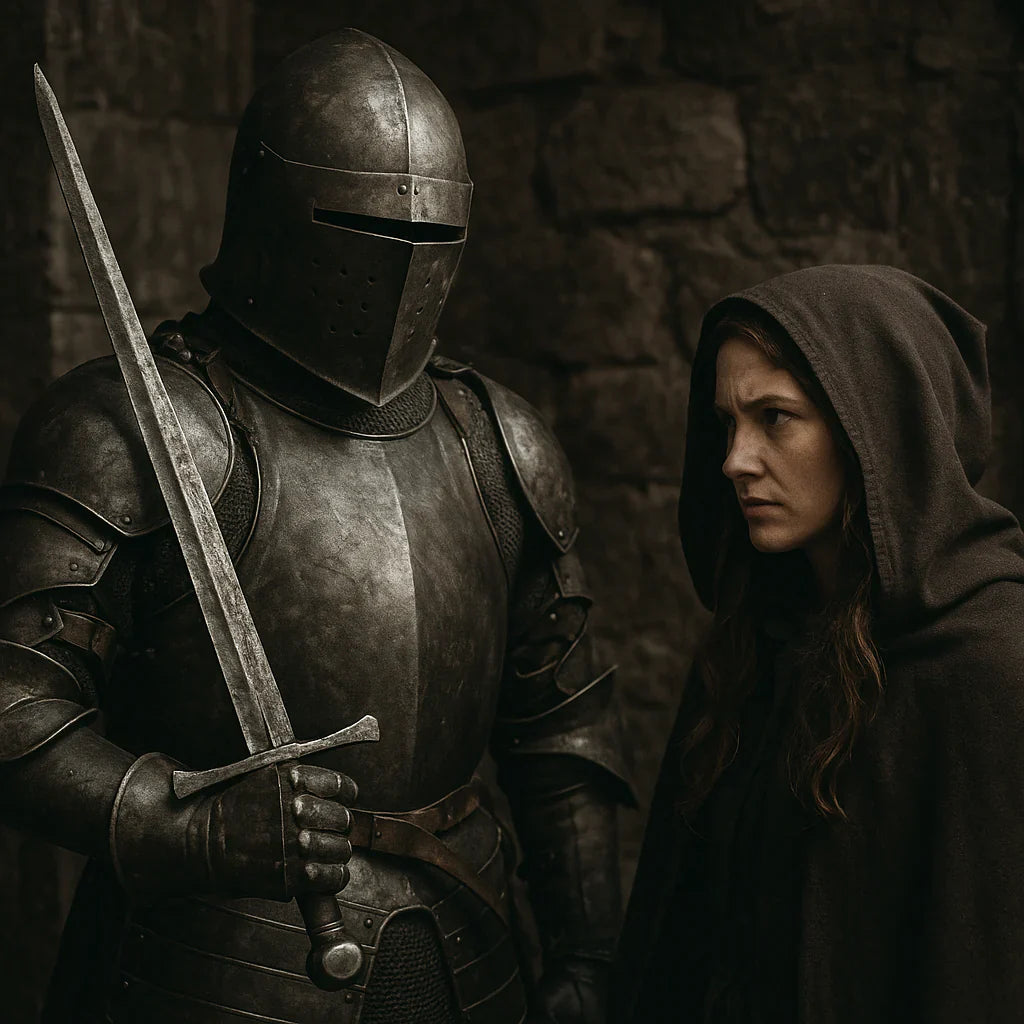We often think of orcs as green monsters from fantasy movies, but long before Hollywood or modern books, orcs populated European folklore as feared creatures, linked to the underworld, chaos, and destruction.
Who were the orcs really in the medieval imagination? How were they described and what role did they play in ancient legends?
In this article, we'll explore the true origins of orcs, far from the cinema, delving into the classical texts, popular beliefs, and oral tales that shaped them for centuries.

Orcus: the Roman god of the underworld and eternal punishment
The word "orc" comes from the Latin Orcus , an ancient Roman god linked to the underworld and the punishment of evil souls.
Although sometimes identified with Pluto (the Roman Hades), Orcus had a darker connotation: he was not a ruler of the underworld, but a spirit who roamed it to punish wrongdoers.
In funerary inscriptions, his name appeared as a warning. Orcus symbolized the fate that awaited the unjust: perpetual torment in the depths.
He was not represented in a clear physical form, but over time, the name became associated with monstrous figures that guarded the underworld.
Orcs in Italian folklore: man-eaters
During the Middle Ages, the term orc became part of Italian folklore, especially in northern regions such as Piedmont and Tuscany. There, the orc ceased to be merely a punitive spirit and took on a more concrete form: that of an ogre who devoured children and travelers.
These orcs were described as hairy giants with glowing eyes, fangs, and superhuman strength. They lived in deep forests or mountain caves and preyed on those who entered their domains.
Folk tales such as those compiled by Giambattista Basile in the 17th century feature these stories, in which the orc appears as a figure similar to the ogre we would later come to know in tales such as "Tom Thumb."

The Orcneae in Beowulf : Demons of Primeval Chaos
One of the earliest mentions of orc-like creatures is in the Anglo-Saxon poem Beowulf , dating from around the 8th century. It speaks of orcnéas , a word combining “orc” with “neas” (beings).
These orcnea are part of a list of monsters, along with dark elves and giants, all considered descendants of Caine.
The orcneae had no precise form, but they represented forces of chaos, enemies of humanity and divine order. They are believed to have been evil spirits who lived on the fringes of the known world: swamps, caves, or wastelands.
Giants and ogres of Germanic folklore: relatives of the orcs
In Germanic and Scandinavian mythology, there are figures that can be considered "relatives" of the orcs: the jötnar (giants), the trolls , and the ettins (Anglo-Saxon giants). These creatures were enemies of the gods and humans, and inhabited inhospitable regions such as mountains, eternal ice, and deep caves.
Scandinavian trolls , for example, were often deformed, slow , but terrifyingly strong, and hostile to civilization.
Although they were not called orcs, they shared many characteristics: ugliness, brutality, wildness, and a close relationship with darkness or corruption.

The orc as a symbol of medieval fear
In a time when the forest was a dangerous place and the unknown was associated with evil, the orc served as a warning. He was not just a monster, but a moral figure: those who strayed from the righteous path could be devoured, punished, or condemned by forces beyond human understanding.
For this reason, orcs were used in folk tales to frighten children, teach them lessons, and reinforce social norms. They represented the dangers of isolation, greed, disobedience, and sin.
Beyond the monster, an ancestral shadow
Far from the modern aesthetics of film or video games, the orcs of medieval folklore were entities steeped in symbolism. Born of the fear of darkness, punishment, and disorder, they reflected a worldview in which the unknown always lurked.
Whether they were the punitive spirits of the Romans, the devourers of Italian tales, or the demons of Beowulf , orcs have been an essential part of our mythic heritage. They speak of a world where the line between human and monstrous was thin… and often deadly.
Don't forget to visit our Medieval Shop .









